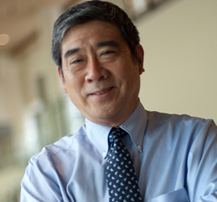Whither U.S. Grand Strategy? Debating the Future of American Policy
by Lena Simone Andrews, Political Science
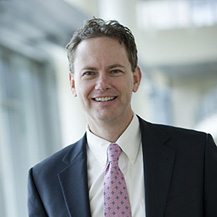
The Center hosted a Starr Forum "Whither U.S. Grand Strategy?" on October 9. Francis Gavin (above), Jacqueline Hazelton and Barry Posen were among the panelists.
What should the grand strategy of the United States be in an era of unique challenges and widespread global conflict? On Thursday, October 9, four scholars of American grand strategy and foreign policy came together to discuss this and related questions in a public forum, leaving the audience with some answers and many questions about the wisdom of current U.S. grand strategy.
As defined by Barry Posen, Ford International Professor of Political Science at MIT, grand strategy is best understood as a "state's theory of how to create security for itself" that includes a political–military means ends chain, which prioritizes and justifies national goals. It was this concept that provided the fodder for the October Starr Forum, "Whither U.S. Grand Strategy?" hosted by MIT's Center for International Studies (CIS), moderated by Kenneth Oye, Associate Professor of Political Science and of Engineering Systems at MIT, and featuring commentary from Francis Gavin, Frank Stanton Chair in Nuclear Security Policy and Professor of Political Science at MIT, Jacqueline Hazelton, Assistant Professor in the Department of Strategy and Policy at U.S. Naval War College, Barry Posen, Ford International Professor of Political Science at MIT and Stephen Walt, Robert and Renee Belfer Professor of International Affairs at Harvard Kennedy School.
Restraint: The Dark Horse of American Grand Strategy?
Among the views presented, Posen and Walt agreed that the United States would be best served by pursuing a grand strategy of "Restraint." Arguing that the U.S. occupies a uniquely secure position in the world with its wealth, geographic isolation, and overwhelming military superiority, Posen and Walt agreed that the United States would be best served by minimizing its overseas commitments.
Posen argued that it is precisely these commitments that serve to radicalize foreign populations, and encourage moral hazard and free riding by allies. Therefore, Posen argued, the United States should dramatically reduce its involvements abroad and, instead, focus on three major priorities: (1) monitoring the rise of China; (2) preventing the proliferation of nuclear weapons to nonstate actors; and (3) continuing to fight radical terror groups.
Despite making a strong argument for restraint, both Posen and Walt were pessimistic about the likelihood of the concept taking root in the broader foreign policy community. Instead, both scholars agreed that among DC foreign policy elite—including not just formal government agencies, but also think tanks, membership organizations, special interests, and many others—there has emerged a self–serving consensus that supports global activism.
Walt, in particular, noted that this global activism is perpetuated the foreign policy elite in the United States through a variety of mechanisms, including: threat inflation, manipulating in the marketplace of ideas, concealing costs, and failing to hold individuals accountable. As a result of these reinforcing mechanisms, Walt argued that the incentives for global engagement within the U.S. foreign policy community would continue to persist well into the foreseeable future.
The Utility of the Grand Strategy Framework
The panel, however, was not uniform in its support of a more restrained American grand strategy. Gavin and Hazelton, for their part, raised a number of important questions about the basic premises of grand strategic thought both historically and today.
In Gavin's view, a shift toward restraint would be based on a faulty reading of the empirical record. As Gavin points out, despite a persistent record of global engagement since the end of the Cold War, there have been few of the negative ramifications predicted by advocates of restraint—the United States remains the strongest state in the world, and looks poised to retain that position for many years to come.
In addition, Gavin pointed out that grand strategy is an often–used but ill–understood concept in International Relations. Accordingly, he argued that the concept deserves closer historical study and contextualization to better inform current debates.
The panel concluded with comments from Hazelton, who raised important questions about the practicality of realist approaches to grand strategy, asking if "the United States is strong enough that it doesn't have to be smart?" More specifically, Hazelton challenged the panel and the audience to consider what the appropriate way forward would be, given that restraint is unlikely to gain much traction in Washington, and global engagement remains the grand strategic position of choice. In doing so, Hazelton questioned how academia could more effectively influence policymakers, whose incentives might otherwise push them in strategically unwise and uninformed directions.
Hazelton concluded by encouraging the audience to consider the difficult questions facing policymakers today, asking: "What are the must dos for the United States internationally, what are the can dos, what are the things that can wait, and how do you start deciding?"
British Journalist Louisa Reynolds Joins CIS
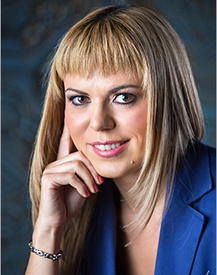
Louisa Reynolds
Louisa Reynolds, an independent journalist based in Guatemala City, Guatemala, has been selected as the 2014–15 IWMF Elizabeth Neuffer Fellow. The award is offered through the International Women's Media Foundation (IWMF) and is sponsored in part by CIS.
Reynolds is the tenth recipient of the annual fellowship, which gives a woman journalist the opportunity to develop expertise while focusing on human rights journalism and social justice issues.
Reynolds, 33, covers human rights cases, femicide and gender–based violence in Guatemala. "I strongly believe that journalism can act as a powerful instrument for change by highlighting injustice and also by finding stories that prove that a transformation is possible," she said. Reynolds has contributed regularly to Latinamerica Press / Noticias Aliadas, Inter–Press Service, Plaza Pública, Proseco, El Periódico, and other publications since 2011. Previously, she was a reporter for El Periódico and an editor for Inforpress Centroamericana.
Beginning in September, Reynolds will spend the seven–month fellowship as a research associate in residence at CIS. She will also complete internships at The Boston Globe and The New York Times.
Ellen Clegg, president of the Boston Globe Foundation and Globe spokeswoman, said, "Each Neuffer fellow embodies the core principles that our beloved colleague, Elizabeth Neuffer, held dear: courageous journalism, boundless curiosity, and a burning desire to shine a light on injustice. Ten years out, we're proud to see how the fellows have made their mark on the world."
"It's truly an honor for CIS to host the Neuffer fellows each academic year. Louisa is yet another example of a courageous journalist whose work is transforming lives. We look forward to her time at MIT," said Richard Samuels, Ford International Professor of Political Science and director of CIS.
The Elizabeth Neuffer Fellowship is a project of the Elizabeth Neuffer IWMF Fund, which is generously supported by Peter Canellos, Mark Neuffer, Carolyn Lee, the John S. and James L. Knight Foundation, the Boston Globe Foundation, The New York Times Company Foundation, Boston Scientific, MIT Center for International Studies and friends and family of Elizabeth Neuffer.
3 Questions: Calestous Juma on African Development
by Peter Dizikes, MIT News Office | Originally published here
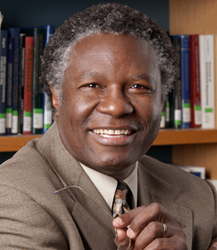
Calestous Juma
How can Africa find new ways to spark economic growth? That was the focus of a wide–ranging public symposium hosted by the Center for International Studies as part of its Starr Forum event series. The event was held on Wednesday, Sept. 24, from 3:00 to 4:30 p.m. in the Whitehead Institute's McGovern Auditorium, and was organized in collaboration with the MIT Africa Interest Group. MIT News discussed the issue with Calestous Juma, the event's moderator. Juma is the Martin Luther King Jr. Visiting Professor of Urban Studies and Planning at MIT, and professor of the practice of international development at the Harvard Kennedy School. Juma is an affiliate of CIS.
Q. You have worked with the African Union as a high–level advisor to develop its new 10–year Science, Technology and Innovation Strategy for Africa, which is a focal point of tomorrow's Starr Forum symposium. What are some of the distinctive features of this roadmap, regarding the contemporary challenges of growth across the continent?
A. The key distinctive feature of the strategy is the recognition that Africa cannot sustain economic growth and promote prosperity without significant investments in technological innovation. It a departure from traditional growth strategies that focus on raw material exports. This is a bold attempt to reposition Africa as a player in the global knowledge economy. It emphasizes the strategic role of technological innovation in addressing critical challenges such as meeting human needs (such as food and health), improving international competitiveness through trade in manufactured goods, and protecting the environment.
To address these challenges, the African Union focuses on three key areas. The first is to build infrastructure — mainly energy, transportation, water and sanitation, irrigation, and telecommunication. Poor infrastructure is a key obstacle to Africa's economic development and affects activities ranging from agriculture to health and scientific research.
Second, Africa will need to upgrade its technical competence and create the skills needed to respond to emerging economic and environmental challenges. This will be done through improving science, technology, engineering, and math education.
Finally, the strategy outlines measures for promoting technology–based entrepreneurship as the most efficient mechanism for translating technological ideas into goods and services for economic transformation. It underscores the critical role that high-level leaders, especially presidents and prime ministers, can play in fostering interactions among key actors such as government, academia, and business in promoting innovation.
Q. A variety of countries in Africa have new initiatives to build larger university infrastructures. What are some of the crucial factors in making these efforts successful — and can scientists and technologists use this process to build new bridges to political leaders in Africa?
The first major step in building the technical competence needed to propel African economies is to recognize legacy policies where universities predominantly teach but do undertake much research. National institutes, on the other hand, carry out research but have limited teaching functions. One possible way to solve this problem is to create a new species of universities that combine research, teaching, and entrepreneurial activities under one roof.
A greater degree of institutional innovation will be needed to align higher technical training with development objectives. This will involve reforms in curriculum, pedagogy, and location of universities to enable them to link more directly with the productive sector. Creating new technology–based universities will complement existing universities that have played an important role in building state institutions. What is needed today is to foster innovation and entrepreneurship.
The reforms needed to reposition higher education institutions will require broad dialogue between government, academia, and the private sector. Governments will need to create mechanisms such as national science and technology academies, as well as offices of science advisors to heads of state. Issues for which governments need urgent advice include the long–term implications of the advent of online education.
Q. We face a variety of challenges when it comes to sustainability, whether relating to food security or climate change, land use, and other issues. In what ways does Africa have novel opportunities to merge innovation and sustainability?
A. One of the main advantages of being a latecomer is the ability to harness new technologies that have a smaller ecological footprint than older vintages. For example, Africa's ecological footprint would be much larger if it met its current communication needs using landlines instead of mobile connectivity. This logic of technological leapfrogging has yet to be pursued as policy strategy to promote sustainable development.
There are a number of emerging candidate technologies that help Africa reduce its ecological impact. Transgenic industrial crops such as cotton that have been engineered to resist pests have been demonstrated to reduce the use of harmful pesticides. This technology has been commercially adopted by only three African countries: South Africa, Burkina Faso, and Sudan. Other technologies that could have similar ecological benefits include the use of polymers for the slow release of fertilizers and pesticides.
Many of these transformational technologies also disrupt traditional social arrangements, and are therefore often associated with public controversies. Promoting ecologically sound development strategies will therefore need to take into account an improved assessment and management of technological risks. Africa has the opportunity to start from scratch by leapfrogging the legacy technologies that the industrialized nations are now burdened with. Mobile phones represent a powerful metaphor of how to think about the ecological function of technological leapfrogging in Africa.
Former NSA Inspector General Joel Brenner joins MIT Center for International Studies
Joel Brenner, former inspector general and senior counsel at the National Security Agency (NSA), has joined the MIT Center for International Studies (CIS) as a 2014–2015 Robert E. Wilhelm Fellow.
Brenner specializes in cyber and physical security, data protection and privacy, intelligence law, the administration of classified information and facilities, and the regulation of sensitive cross–border transactions. He is the author of America the Vulnerable: Inside the New Threat Matrix of Digital Espionage, Crime, and Warfare, available in paperback as Glass Houses: Privacy, Secrecy, and Cyber Insecurity in a Transparent World.
While at MIT, Brenner will be working on intelligence and security issues related to foreign affairs. He is particularly interested in intelligence collection, privacy, and secrecy as emerging issues in international relations and in the potential for curbing state–sponsored theft of intellectual property.
"Dr. Brenner is a thoughtful and deeply engaging policy intellectual, and we are delighted he has joined our community. Our faculty and graduate students look forward to engaging with him as we study the challenges of intelligence, secrecy, and privacy in contemporary international affairs," said Richard Samuels, Ford International Professor of Political Science and director of CIS.
Brenner was at MIT last year as a guest speaker for a Starr Forum: "The 'Snowden Affair': Intelligence and Privacy in Wired World." The public event, hosted by CIS, attracted a capacity audience of about 200 people. Other speakers included Ambassador Chas Freeman and Susan Chira of the New York Times. Admiral William Fallon, former head of CENTCOM and a former CIS Robert E Wilhelm Fellow, moderated the event. The event was covered by MIT News and is available in video.
As NSA's senior counsel, Brenner advised agency leadership on the public–private effort to create better security for the Internet. Prior to that, from 2006 until mid–2009, he was the head of U.S. counterintelligence under the director of national intelligence and was responsible for integrating the counterintelligence activities of the 17 departments and agencies with intelligence authorities, including the FBI and CIA and elements of the Departments of Defense, Energy, and Homeland Security. From 2002–2006, Mr. Brenner was NSA's inspector general, responsible for that agency's top–secret internal audits and investigations. He has also served as a prosecutor in the Justice Department's antitrust division and has extensive trial and arbitration experience in private practice.
Brenner holds a JD from the Harvard Law School, a PhD from the London School of Economics, and a BA from the University of Wisconsin-Madison. See more at his web site.
A generous gift from Robert E. Wilhelm supports the Center's Wilhelm fellowship. The fellowship is awarded to individuals who have held senior positions in public life and is open, for example, to heads of non–profit agencies, senior officials at the State Department or other government agencies, including ambassadors, or senior officials from the UN or other multilateral agencies. Previous Wilhelm fellows include: Ambassador Barbara Bodine, Ambassador Frances Deng, Admiral William Fallon, and Yukio Okamoto, a former special advisor to the prime minister of Japan.
JoAnn Carmin, Expert on Cities and Climate Change, Dies at Age 56
by Peter Dizikes, MIT News Office | Originally published here
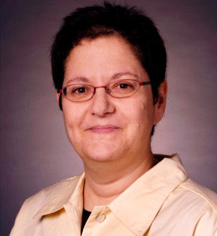
JoAnn Carmin
JoAnn Carmin, an associate professor of environmental policy and planning at MIT, died on Tuesday after an extended illness. She was 56 years old.
Carmin had been on the faculty of MIT's Department of Urban Studies and Planning since 2003 and she was the founding director of the Center's Program on Environmental Governance and Sustainability. Her work broke new ground in examining the relationship between environmental problems and governmental actions. In particular, over the last decade Carmin studied the process through which cities around the world were responding to climate change.
Carmin's research relied on intensive fieldwork in cities, and on pioneering global surveys about the responses of urban leaders. She conducted extensive research on urban planning for climate change in Durban, South Africa, and Quito, Ecuador, among other places, describing in detail how local officials either found effective new ways of pushing climate planning forward, or ran into significant challenges.
Carmin's work showed that many of the metropolises with the most advanced planning for climate change were not in the wealthiest parts of the world, but rather were in regions that were already subject to extreme weather events, or had experienced resource problems tied to climate. This trend was also evident in the quantitative surveys she helped launch.
Carmin also looked closely at the relationships among local, state, and national governments, uncovering the sometimes–fraught circumstances in which urban leaders attempted to gain support for climate initiatives from the other levels of government. Leaders in many cities, Carmin told MIT News in 2012.
Carmin was also direct and outspoken on the significance of climate change and the uneven progress communities and countries were making in dealing with it. "The issue is really critical," she told MIT News in 2012, adding that for cities actively confronting climate problems, "Just being able to initiate a program is a big first step, but sustaining it is a huge challenge."
Carmin co–edited four books on politics and environmental issues; she also wrote or co–authored more than two dozen journal articles, as well as more than a dozen book chapters or published reports. She gave talks and conference presentations at a wide variety of institutions on five continents, addressing audiences at universities and at organizations such as the World Bank.
Carmin also served as a lead author for a chapter of the U.S. National Climate Assessment, and for part of the Fifth Assessment Report of the Intergovernmental Panel on Climate Change, published in 2013.
"JoAnn was a friend and a close colleague," said Eran Ben–Joseph, head of MIT's Department of Urban Studies and Planning. "JoAnn quickly established herself as one of the world's leading environmental sociologists. Her work on the role of social movements and institutions in shaping climate change policies has helped define climate–adaptation planning in cities across the world. She will be sorely missed."
Carmin received her BS in 1990 from Cornell University, studying management and organizational behavior. She obtained an MS in management and organizational theory from Cornell in 1993, and received her PhD in 1999 from the University of North Carolina at Chapel Hill, in environmental policy and planning. Her dissertation was on environmental politics in the Czech Republic.
Before joining MIT in 2003, Carmin was an assistant professor at Virginia Tech and a visiting scholar at Duke University. At MIT, she was promoted to associate professor in 2006, and earned tenure in 2010.
Carmin was an active and energetic teacher who created classes at MIT on subjects including environmental justice; disaster vulnerability and resilience; urban climate adaptation; and rebuilding New Orleans in the aftermath of Hurricane Katrina. She served as a thesis advisor or reader for dozens of graduate students.
Carmin is survived by her sister, Cheryl Carmin, a professor at Ohio State University, and was close to many friends and colleagues. Donations in her memory can be made to the JoAnn Carmin Memorial Fund at MIT or to the World Wildlife Fund.
A liturgy and memorial service was be held on Thursday, July 17, at 7:00 p.m. at Shambhala Meditation Center of Boston, located at 646 Brookline St. in Brookline.
3 Questions: Kenneth Oye on the Regulation of Genetic Engineering
by Peter Dizikes, MIT News Office | Originally published here
Imagine a scientific technique that would alter the genes of mosquitos to render them unable to transmit malaria. Some day, you may not need to: Scientists have made notable progress in recent years in editing the genomes of organisms, substituting in variants of certain genes; these variants could then propagate throughout a population. While such changes could have benefits — such as limiting malaria transmission — it's also possible to imagine unintended negative consequences. Kenneth Oye, an associate professor of political science and engineering systems who studies government regulation and directs the Center's Program on Emerging Technologies, is lead author of an article in Science making the case that the U.S. government, and international groups, need to adapt their procedures to enable more robust discussion and evaluation in this field. MIT News asked him to discuss the topic.
Q. What are "gene drives?"
A. Genes in sexually reproducing organisms typically have a 50 percent chance of being inherited. Some naturally occurring genes have evolved methods of significantly improving these odds: These selfish genes can increase in relative frequency in a population, even while reducing the likelihood that an organism will reproduce. These "gene drives" can spread through an entire population of sexually reproducing animals or plants. The genomes of almost every sexually reproducing species contain either an active gene drive or the broken remnants of gene drives.
Ten years ago, Austin Burt of Imperial College London suggested that gene drives might be purpose–built to alter natural populations by adding, deleting, or editing genes in target species, such as mosquitos. But practical problems — especially the difficulty of precisely editing genomes to create engineered drives—stymied realization of Burt's vision. This is about to change. The recent development of a powerful genome–editing tool called CRISPR/Cas9, by a team at Harvard University, MIT, and the University of California at Berkeley, allows scientists to insert, replace, delete, or regulate genes in many different species.
The application of CRISPR/Cas9 is likely to enable development of purpose–built gene drives in the next few years. Potential gene–drive applications include reprogramming insects to limit malaria and other insect–borne disease; reversing pesticide and herbicide resistance; and controlling invasive species. Gene drives might even be developed to "undo," in part, genetic alterations that produce unwanted side effects.
Q. What are some regulatory challenges in dealing with a powerful new technique like this?
A. Simply put, engineered gene drives do not fit comfortably within existing regulatory frames.
Animal applications of gene drives would fall under Food and Drug Administration [FDA] purview as "veterinary medicines." Current FDA guidance defines genetically engineered DNA constructs intended to affect the structure and function of an animal as veterinary medicines and requires developers to demonstrate that such constructs are safe for the animal. It is not clear how this requirement can be reconciled with projected uses of drives including the local suppression of invasive species.
Or consider a hypothetical security case: In theory, gene drives could be developed to harm populations of commercial animals and plants. However, the development of such gene drives would not fall within the scope of oversight of U.S. policy on Dual Use Research of Concern, which calls for oversight of research with potential security concerns. The shipment of such drives would not be covered by current U.S. export-control regulations or Australia Group guidelines on standardization of national biosecurity export controls. All rely on lists of infectious bacteriological and viral agents to define their operational scope, not sexually reproducing plants and animals.
Finally, the potential environmental effects of gene drives are global. But the U.S. and Canada are not signatories to applicable instruments, including the Cartagena Protocol on biosafety [an international agreement]. And other mechanisms for managing environmental effects are not in place.
The prospective development of gene drives highlights the need for regulatory reassessment and reform at both domestic and international levels.
Q. What do you propose as a better way to address potential risks of this form of genetic engineering?
A. We favor early engagement with risks to provide time for research, regulatory reform, and discussion.
First, our initial take on risks suggests that drives have limited potential to harm humans and that risks to animals and plants will be specific to species and alterations. But this assessment is provisional. Our Science article recommends 10 actions that should be taken in advance of release. These include research to improve understandings of gene–drive properties and effects, measures to address identified risks, and hedges in case our initial assessments are wrong.
Second, security regulations should move beyond lists of infectious bacteriological and viral agents toward a functionally defined approach. The threat posed by select agents is serious and should remain a focus of policy. However, regulations and conventions constructed to address these threats do not provide a framework for addressing security implications of gene drives and other advanced biotechnologies.
Third, effective risk governance requires informal partnerships as well as official regulation. Our workshops have included synthetic biologists, evolutionary ecologists, risk analysts, and social scientists from MIT, Harvard, Boston University, Arizona State University, the Woodrow Wilson International Center for Scholars, the Environmental Protection Agency, the National Science Foundation, as well as nongovernmental organizations and biotechnology firms. Other informal, multidisciplinary partnerships cutting across organizations with diverse interests can play a constructive role.
Finally, the idea that discussion of benefits and risks should be tightly controlled is not the right model. The implications of development and use of gene drives extend far beyond the academy. We see our Science article as an open invitation to broader public discussion, not as the last word.




